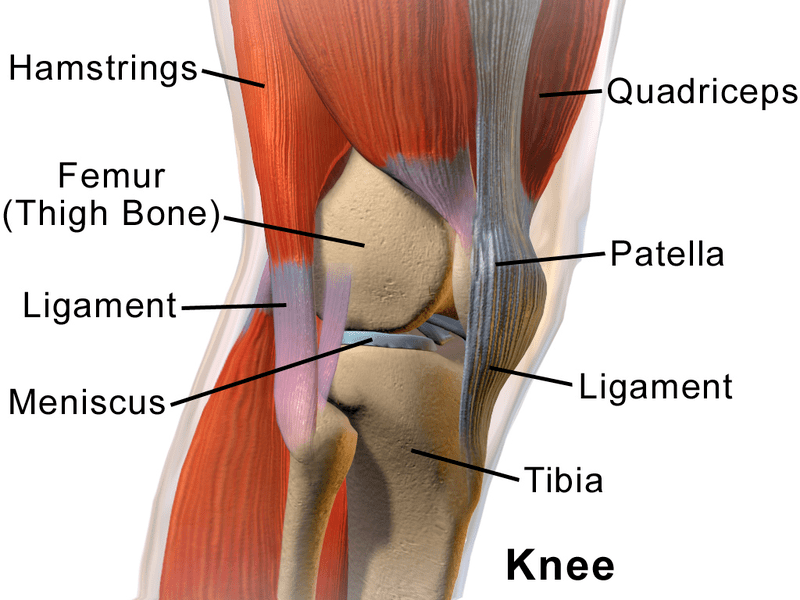What is the Difference Between Articular Cartilage and Meniscus
Table of Contents
The key difference between articular cartilage and meniscus is that articular cartilage is a type of cartilage found in the knee, ankle, hip, shoulder, elbow, wrist, and finger joints, which allows it to slide freely, while meniscus is a type of cartilage found in the knee, wrist, acromioclavicular, sternoclavicular and temporomandibular joints, which mainly acts as a shock absorber.
Articular cartilage and meniscus are two types of cartilages in the joints. Their basic function is to provide smooth surface and stability to articulation (joint), which indirectly helps movement in the human body. Both cartilages are subject to injuries, which will affect the basic movement function in the body.
CONTENTS
1. Overview and Key Difference
2. What is Articular Cartilage
3. What is Meniscus
4. Similarities – Articular Cartilage and Meniscus
5. Articular Cartilage vs Meniscus in Tabular Form
6. Summary – Articular Cartilage vs Meniscus
What is Articular Cartilage?
Articular cartilage is a type of cartilage found in the knee, ankle, hip, shoulder, elbow, wrist, and finger joints, which allows them to slide freely. It is a hyaline cartilage that is 2 to 4mm in thickness. Articular cartilage does not have blood vessels, nerves, or lymphatic tissues. It is composed of a dense extracellular matrix (ECM) with a sparse distribution of specialized cells called chondrocytes. ECM has water, collagen, proteoglycans and other noncollagenous proteins, and glycoproteins in lesser amounts. These components help to retain water within the ECM, which is critical to maintaining its unique mechanical properties. The ultrastructure of collagen fiber, ECM, and chondrocytes contribute to various zones of the articular cartilage: middle zone, deep zone, and calcified zone. Moreover, within each zone, three specific regions can be identified: pericellular region, territorial region, and interterritorial region.

Figure 01: Articular Cartilage
The function of articular cartilage is to provide a smooth, lubricated surface for articulation. It also facilitates the transmission of loads with a low frictional coefficient. Articular cartilage disorders can be caused due to various factors such as injury, osteoarthritis, overuse, muscle weakness, bone misalignment, obesity, and inflammatory arthritis. Furthermore, injury to articular cartilage is recognized as a major cause of musculoskeletal morbidity.
What is Meniscus?
Meniscus is a type of cartilage found in the knee, wrist, acromioclavicular, sternoclavicular, and temporomandibular joints and mainly acts as a shock absorber. It is a crescent-shaped fibrocartilaginous anatomical structure that only partly divides a joint cavity. Menisci of the knee are two pads of fibrocartilaginous tissue. They serve to disperse friction in the knee joint between the lower leg and thigh. They are concave on the top and flat on the bottom, articulating with the tibia. Moreover, they are attached to small depressions between the condyles of the tibia. Towards the center, they are unattached, and their shape narrows to a thin shelf.

Figure 02: Meniscus
The blood flow of the meniscus is from the periphery to the central meniscus. On MRI images, menisci show low intensity. Furthermore, the basic function of the menisci is dispersing the weight of the body and reducing friction during movement.
What are the Similarities Between Articular Cartilage and Meniscus?
- Articular cartilage and meniscus are two types of cartilages in the joints.
- Both cartilages can be found in locations such as the knee.
- These cartilages help the flexible movement of the human body.
- Both cartilages are subject to injuries, which will affect the basic movement function in the body.
What is the Difference Between Articular Cartilage and Meniscus?
Articular cartilage is a type of cartilage found in the knee, ankle, hip, shoulder, elbow, wrist, and finger joints, which allows them to slide freely while meniscus is a type of cartilage found in the knee, wrist, acromioclavicular, sternoclavicular and temporomandibular joints, and mainly acts as a shock absorber. Thus, this is the key difference between articular cartilage and meniscus. Furthermore, articular cartilage does not have blood vessels, nerves, or lymphatic tissues, while meniscus has them.
The below infographic presents the differences between articular cartilage and meniscus in tabular form for side-by-side comparison.
Summary – Articular Cartilage vs Meniscus
Articular cartilage and meniscus are two types of cartilages in the joints. Articular cartilage allows joints to slide freely, while meniscus is a type of cartilage that mainly acts as a shock absorber. Articular cartilage lacks blood vessels, nerves, or lymphatic tissues, while meniscus has blood vessels, nerves, or lymphatic tissues. So, this is the summary of the difference between articular cartilage and meniscus
Reference:
1. Sophia Fox, Alice J, et al. “The Basic Science of Articular Cartilage: Structure, Composition, and Function.” Sports Health, SAGE Publications, Nov. 2009.
2. Fox, Alice J S, et al. “The Basic Science of Human Knee Menisci: Structure, Composition, and Function.” Sports Health, SAGE Publications, July 2012.
Image Courtesy:
1. “907 Synovial Joints” By OpenStax College – Anatomy & Physiology, Connexions Web site, Jun 19, 2013. (CC BY 3.0) via Commons Wikimedia
2. “Blausen 0597 Knee Anatomy Side” By Blausen.com staff (2014). “Medical gallery of Blausen Medical 2014”. WikiJournal of Medicine 1 (2). DOI:10.15347/wjm/2014.010. ISSN 2002-4436. – Own work (CC BY 3.0) via Commons Wikimedia
ncG1vNJzZmivp6x7pbXFn5yrnZ6YsqOx07CcnqZemLyue9ahmK1lmah6tbTEZpuinpaav6a6wp5km52krLKmuoyaqa2hk6q5or6MnJirrJmhrqixjJqlnWWdmruqv8Kuqmg%3D